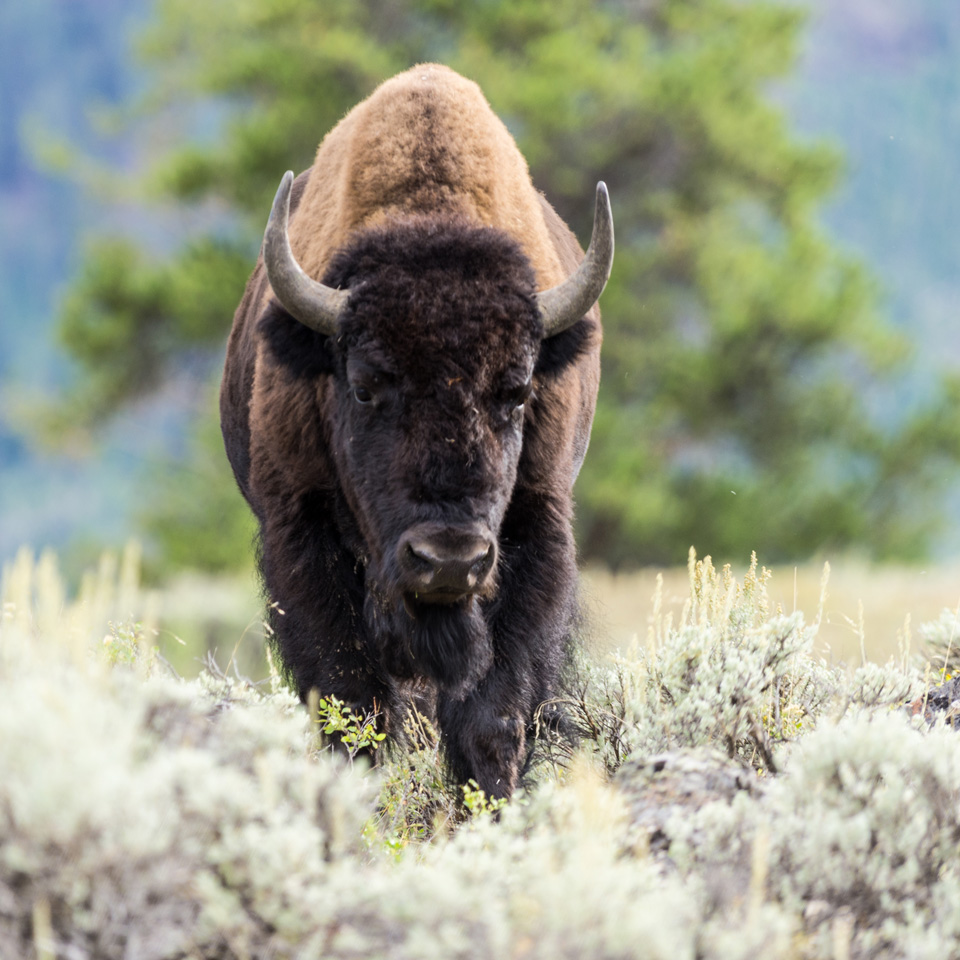Not that long ago, Plains Bison (Buffalo) were almost extinct — we had nearly wiped their population from the face of the earth during the 19th century.
The Bison Belong campaign began as a citizen-based effort to support the reintroduction of wild plains bison back to their natural habitat in Banff National Park. In 2009, the Eleanor Luxton Historical Foundation championed these bison restoration efforts, advocating for the reintroduction of bison into Banff to renew the ecological, cultural and historical values of this iconic species in their native habitat.
Bison Belong in Banff National Park and in February 2017 they were able to return.

Banff has always been a leading actor in the life and death drama of the buffalo.
The town lost its Bison from the wild in the 1870s. In 1907, Norman Luxton and National Park Superintendent Howard Douglas were instrumental in conserving the bison species. The Pablo herd started from a few calves and were bred to become the largest surviving plains bison herd. Both Douglas and Luxton participated in the great buffalo round-up which took several years. Seven hundred and eight buffalo were shipped to Canada, mostly to Elk Island National Park, Alberta.
Others were sent to Banff which served as an early refuge where a few survivors from diverse areas were brought into a paddock near town. To help ensure the survival of the species, the townspeople initiated the purchase and conservation of the largest herd descended from wild plains buffalo.
Photo credit: Johane Janelle

Plains Bison are once more performing an important ecological role in the landscape of the Panther Valley in the Eastern Slope of Banff National Park, where they are a keystone species. Vegetarian, their grazing activities not only increase nutrient levels in the soil, disperse seeds for plant diversity, improve the quality of nesting for many prairies birds and they are great landscape engineers. The bison used to share the landscape with other large mammals such as grizzly, wolves, elk, deer, moose, sheep and pronghorn through time and habitat range.
Their habitat ranges from the dry, hot desert grassland in the Southern United States and Mexico to cold, mountainous and forested habitat of Northern Canada. A strong head and neck are used to brush snow out of the way and forage for food in the winter. They are well positioned to withstand the changing climate because of their ability to adapt, not only during the changing seasons, but through the past hundreds thousand of years.
The bison is one of the world’s iconic species that enjoys a history rich in archeology, palaeontology, story, legend, and oral and documentary history. Through the far-sighted efforts of Canadians and Americans, of both First Nations and European descent, the species was saved just in time with sufficient genetic diversity to have a future.
Be part of the Plain Bison's future by following Bison Belong on Facebook and read more about Banff Bison on Parks Canada blog.

The Buffalo: A Treaty of Co-operation, Renewal and Restoration
Since the beginning of time, hundreds of generations of the first peoples of the First Nations of North America have considered the bison or the buffalo to be their relatives. Buffalo is part of us and We are part of Buffalo culturally, materially, and spiritually. Our on-going relationship is so close and so embodied in us that Buffalo is the essence of our holistic eco-cultural life-ways. It is our collective intention to recognize BUFFALO as a wild free-ranging animal and as an important part of the ecological system; to provide a safe space and environment across our historic homelands, on both sides of the United States and the Canadian border, so together We can have our brother, the Buffalo lead us in nurturing our land, plants and other animals to once again realize THE BUFFALO WAYS for our future generations.
The original Buffalo Treaty and resolutions which were signed by many First Nations Bands from September 2014 — 2018 are archived at the Whyte Museum of the Canadian Rockies.
Photo credit: Harvey Locke

